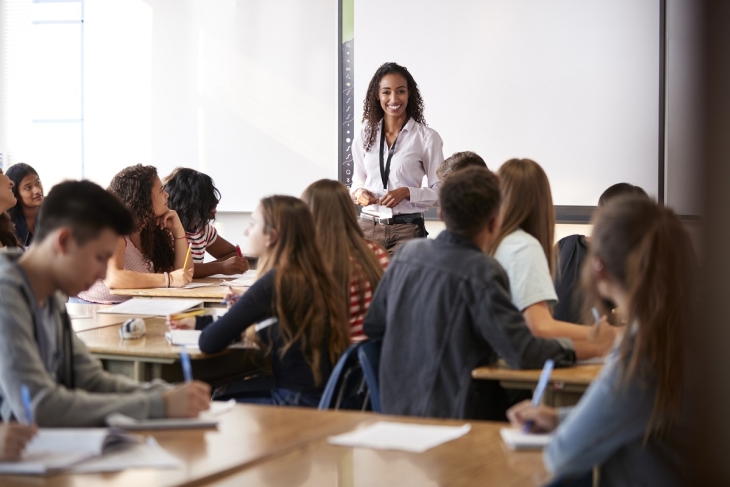In the last six months, as the nation has struggled in the grip of the Covid-19 pandemic, there’s been a lot of controversy and disagreement over what schools need and how they should reopen. As we head into election season, the controversy will probably only increase. But there’s one thing that everyone should be able to agree on: Students need talented teachers now more than ever.
To be fair, schools have always needed talented teachers. A multitude of research has shown that quality teaching is necessary for student achievement and for positive labor market outcomes, so saying that teachers matter when it comes to closing achievement gaps isn’t exactly a startling revelation. But as Covid-19 fallout continues to build, and recommendations for how schools can mitigate learning losses pile up, there aren’t a whole lot of people talking specifically about beefing up our teaching force with as many talented educators as we can find. Ideas like high dosage tutoring and summer school are important. But the sheer size of coronavirus impacts means we need to invest in a solution that can reach every community in the coming years—and teachers are one of the few things all schools have in common.
Although effective teachers are the key to helping students everywhere catch up, some communities will need them more than others. The pandemic’s persistence has forced hundreds of Ohio schools to reopen this fall fully remote. Starting a new school year with distance learning is hard no matter who you are. But it appears that certain groups of students are more likely to be stuck with distance learning. Nationwide, minority students are more likely than white students to be starting the new year online. And in Ohio, many of the districts with the highest concentration of low-income students—Cleveland and Columbus for instance—are fully remote while neighboring affluent suburbs provide in-person options.
To be clear, some of these differences are due to parental preferences. And in many places, distance learning is still the safest option. But being physically present in school is critical for students, not just in terms of academic learning, but also for healthy development and well-being. In affluent districts, parents have options that can mitigate the loss of school. Families in underserved communities don’t have those options, so their schools need to invest in an intervention that promises the best results to the most students—finding, hiring, and retaining high caliber teachers.
Until we get results from reliable and comparable tests like state assessments and NAEP, we won’t have hard data about just how much ground low-income and minority students will need to make up. But there are indications that achievement and progress gaps have grown considerably. The 74 recently reported that when schools shut down this spring, participation and progress on Zearn Math, an online math program for students in grades K–5, decreased among students from low- and middle-income communities but increased among those from high-income areas. David Williams, the policy outreach director for a research group based out of Harvard University known as Opportunity Insights, confirmed that the data seem to suggest school closures have widened existing learning gaps. He told The 74: “This crisis is really impacting low-income kids and low-income communities in a real way that could spell trouble down the road.”
Obviously, Zearn Math is just one example. But so is a canary in a coal mine. In low-income and minority communities, students are more likely to still be learning remotely, and we know distance learning didn’t work. Existing achievement gaps were already wide. A lack of academic opportunities during this pandemic almost certainly expanded them. Research suggests that when it comes to achievement and growth, teachers matter most among school-related factors. To make up for lost ground, underserved schools need talented and effective teachers more than, well, anything.
Unfortunately, hiring and retaining talented teachers is far more complicated than it sounds, even in normal circumstances. The pandemic hasn’t just impacted student learning, it’s also impacted the current teaching force and the pipeline of prospective teachers. It’s going to be difficult for schools to find the talent they need, but not impossible. Stay tuned for a closer look at how to make it happen.


